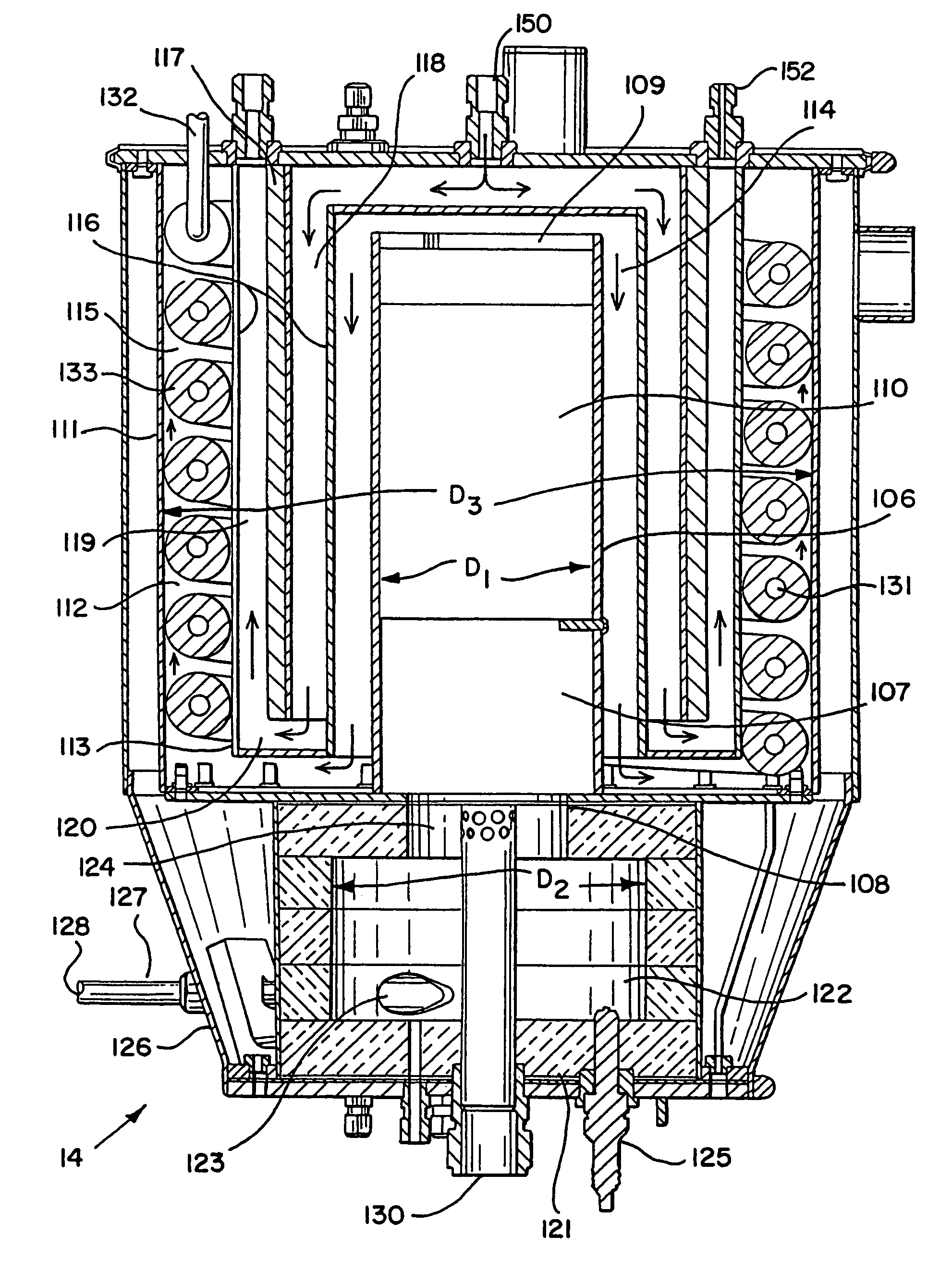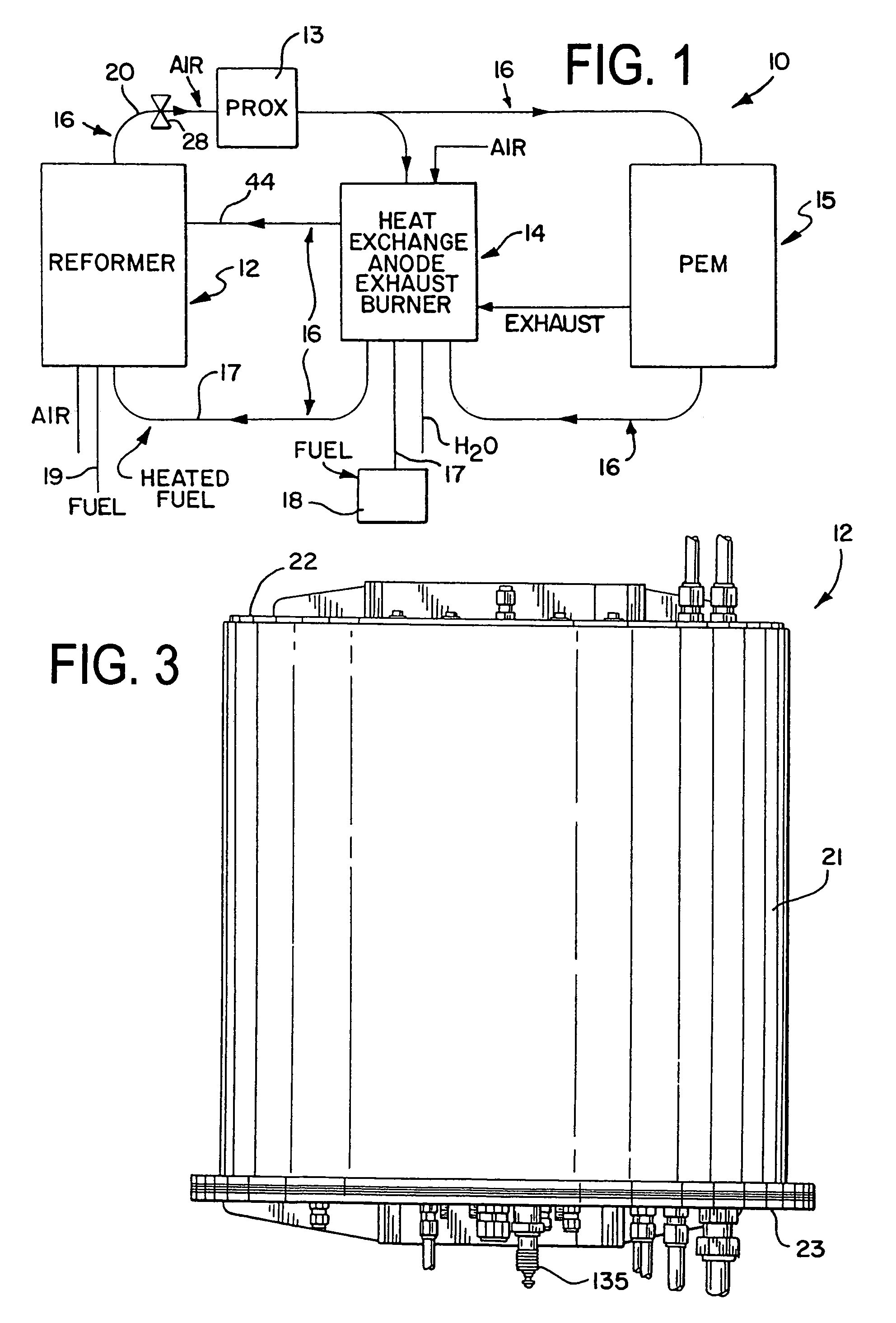Auxiliary reactor for a hydrocarbon reforming system
a technology of hydrocarbon fuel and auxiliary reactor, which is applied in the direction of fluidised bed combustion apparatus, combustible gas production, capillary burner, etc., can solve the problems of carbon monoxide being considered an undesirable reaction product, harming the catalyst used, and another challenge for the proposed integrated system
- Summary
- Abstract
- Description
- Claims
- Application Information
AI Technical Summary
Benefits of technology
Problems solved by technology
Method used
Image
Examples
Embodiment Construction
[0066]While the present invention is susceptible of embodiment in many different forms, this disclosure will described in detail, preferred embodiments of the invention with the understanding that the present disclosure is to be considered as an exemplification of the principles of the invention and is not intended to limit the broad aspect of the invention to the embodiments discussed or illustrated.
I. System and Sub-System Structure
[0067]Referring generally to the appended FIGS. 1–28, the hydrocarbon reforming process and apparatus of the present invention can be more readily understood. The disclosed hydrocarbon reforming system architecture is generally referenced by the number “10” in the following disclosure and drawings. Other specific components, such as the reforming chambers, catalyst beds, auxiliary reactors (e.g., PrOx reactors, tail gas combusters, etc.), and their respective parts, are similarly and consistently numbered throughout this disclosure. While the present hy...
PUM
| Property | Measurement | Unit |
|---|---|---|
| temperature | aaaaa | aaaaa |
| temperature | aaaaa | aaaaa |
| temperature | aaaaa | aaaaa |
Abstract
Description
Claims
Application Information
 Login to View More
Login to View More - R&D
- Intellectual Property
- Life Sciences
- Materials
- Tech Scout
- Unparalleled Data Quality
- Higher Quality Content
- 60% Fewer Hallucinations
Browse by: Latest US Patents, China's latest patents, Technical Efficacy Thesaurus, Application Domain, Technology Topic, Popular Technical Reports.
© 2025 PatSnap. All rights reserved.Legal|Privacy policy|Modern Slavery Act Transparency Statement|Sitemap|About US| Contact US: help@patsnap.com



